Structural Behavior and Stability of Metal Shells with Lateral Confinement
Period: 2008 - present (in progress)
Summary:
The research examines the structural behaviour and stability of steel shells under lateral restrictions. The investigation is numerically and is based on the simulation of shell behaviour with finite elements. For this purpose, the general-purpose program ABAQUS is used. The numerical simulation is verified through available experimental data and analytical solutions.
Two problems are examined in this research:
(a) The buckling strength of cylindrical steel shells confined by an elastic medium under uniform external pressure is examined first. A two dimensional model is developed, assuming no variation of load and deformation along the cylinder axis. The cylinder and the surrounding medium are simulated with nonlinear finite elements that account for both geometric and material nonlinearities. Numerical results are presented in the form of pressure-deformation equilibrium paths, and show a rapid drop of pressure after reaching the maximum pressure level, as well as a significant imperfection sensitivity. Special emphasis is given on the response of the confined cylinders in terms of initial imperfections; those are considered in the form of initial out-of-roundness of the cylinder and as an initial gap between the cylinder and the medium. Furthermore, the effects of the deformability of the surrounding medium are examined. The results indicate significant imperfection sensitivity and a strong dependency on the medium stiffness. A plastic-hinge mechanism is developed that results in a closed-form expression and illustrates the post-buckling response of the cylinder in an approximate manner. The distribution of plastic deformation, as well as the variation of cylinder-medium contact pressure around the cylinder cross-section are also investigated. Furthermore, the effects of uniform vertical preloading on the maximum pressure sustained by the cylinder are examined. Finally, the numerical results show good comparison with a simplified closed-form expression, proposed elsewhere, which could be used for design purposes. The numerical results are also employed to develop a simple and efficient design methodology, which is compatible with the recent general provisions of European design recommendations for shell buckling, and could also be used for design purposes
(b) A new technological application of confined cylinders refers to the use of double-wall-pipes (DWP) in energy pipeline applications (oil, gas etc), where a corrosion-resistant thin-walled liner is fitted inside a carbon steel outer pipe. In the present study, the problem is solved numerically, using nonlinear finite elements capable at simulating the double-wall pipe and the interaction between the liner and the outer pipe. First, an ovalization bending analysis of the double-wall tube is conducted, where a slice of the tube is considered excluding the possibility of buckling. In this analysis, the stress and deformation of the liner in the compression zone is monitored, with emphasis on possible detachment of the liner from the outer pipe. Using a simple buckling hypothesis, it is possible to estimate the curvature at which liner wrinkling would occur. Subsequently, a three-dimensional analysis is conducted to examine buckling of the liner in the form of a uniform wrinkling pattern. The curvature at which buckling occurs and the corresponding buckling wavelength are determined for a wide range of thickness values of the outer tube. Finally, the transition from a uniform wrinkling configuration to a localized buckling pattern is investigated, and reference to experimental observations is made.
Relevant Publications:
In Referred Journals
- Vasilikis, D. and Karamanos, S. A., "Stability of Confined Thin-Walled Steel Cylinders under External Pressure", International Journal of Mechanical Sciences, Vol. 51, No. 1, pp. 21-32, January 2009.
In Conference Proceedings
- Vasilikis, D. and Karamanos, S. A., "Buckling of Unconfined and Confined Thin-Walled Steel Cylinders under External Pressure", ASCE Pipelines Conference, Atlanta, Georgia, July 2008.
- Vasilikis, D. and Karamanos, S. A., "Buckling Design of Confined Steel Cylinders under External Pressure", ASME Pressure Vessels and Piping Conference, PVP2009-77216, Prague, Czech Republic, July 2009.
- Vasilikis, D. and Karamanos, S. A., "Buckling of Double-Wall Elastic Tubes under Bending", 9th HSTAM International Congress on Mechanics, Limassol, Cyprus, July 2010.
Figures:
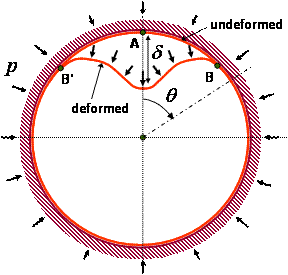
Figure 1. Schematic representation of a confined ring under uniform external pressure.
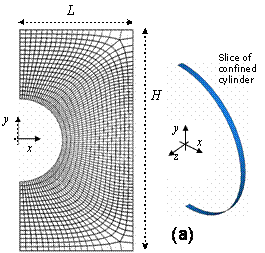
Figure 2. Finite element model of embedded cylinder.

Figure 3. Effects of initial out-of-roundness on the external pressure response of tightly-fitted steel cylinders (), embedded in a rigid confinement medium ().
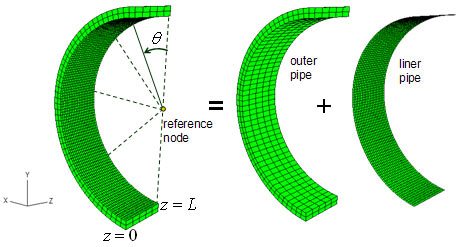
Figure 4. Double Wall Pipe model; outer pipe is modelled with solid elements and liner pipe is modelled with shell elements.
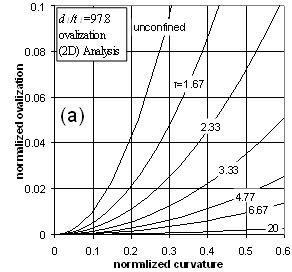
Figure 5. Normalized ovalization of the liner pipe for different thicknesses of the outer pipe.
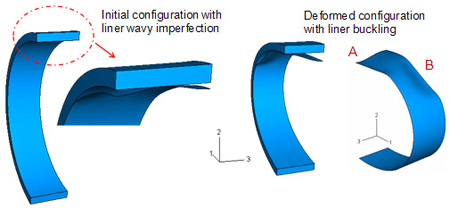
Figure 6. Initial configuration and deformed (buckled) configuration of DW pipe after secondary bifurcation.